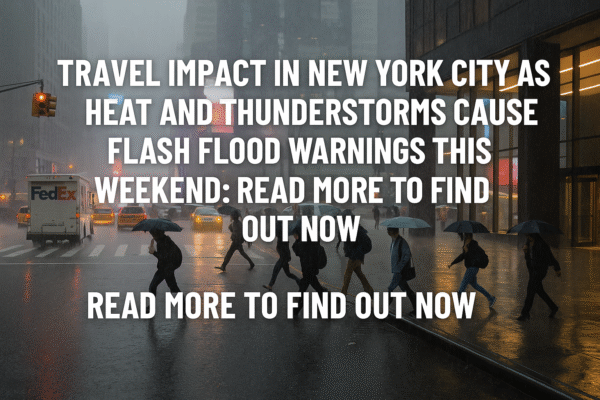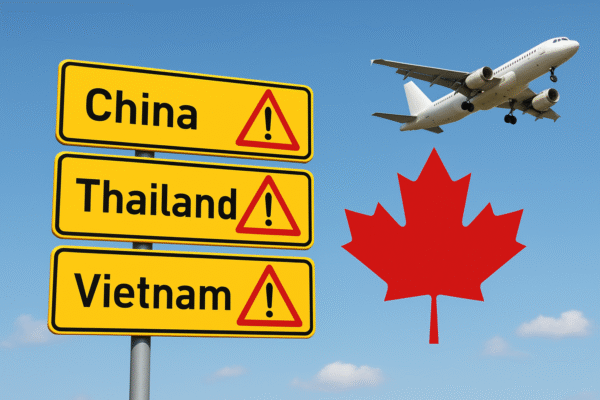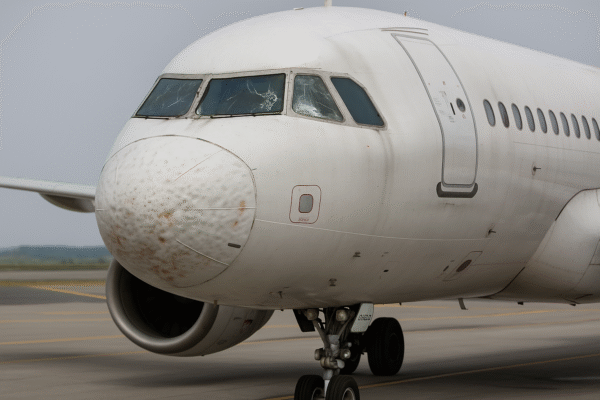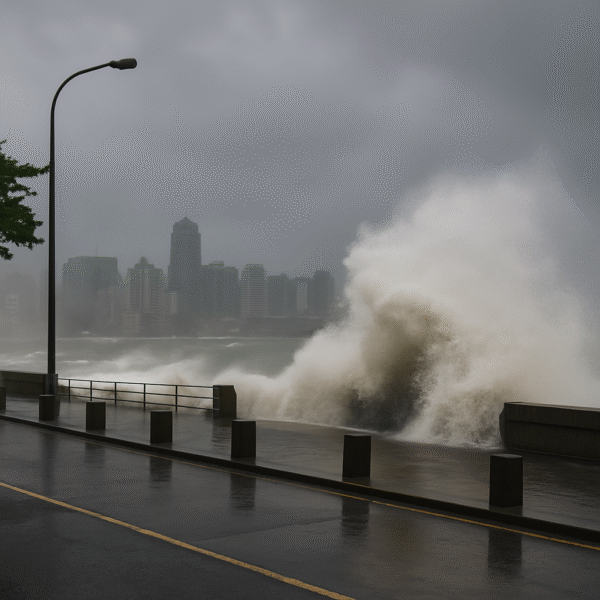Typhoon Wipha Disrupts Tourism and Travel Infrastructure Across Taiwan, the Philippines, and Southern China
TAIPEI / MANILA / HONG KONG / HAINAN — Tropical Storm Wipha, now intensifying into a typhoon, is carving a path of destruction through key tourism and transport hubs across East and Southeast Asia. As of Sunday, July 20, the storm has impacted thousands of travelers in Taiwan and the Philippines and is currently barreling towards southern China, including Hong Kong and the island of Hainan.
According to the Taiwan Central Weather Administration, Wipha has dumped over 200mm of rain across eastern Taiwan, particularly in Hualien and Taitung counties. Ferry services connecting Taiwan’s offshore islands were entirely suspended, and dozens of domestic flights were cancelled due to extreme wind conditions reaching sustained speeds of 101 km/h and gusts of up to 126 km/h. Taiwan’s government urged residents and visitors to remain indoors, especially along the eastern seaboard, where flooding and landslides remain a serious risk.
Philippines Braces Under Infrastructure Strain
In the Philippines, where Wipha made its initial impact, the National Disaster Risk Reduction and Management Council (NDRRMC) issued warnings for flash floods and landslides across Luzon and eastern Visayas. In Quezon City, a major tourism and business hub just north of Manila, a large billboard was toppled by gale-force winds, crushing a parked truck in a dramatic visual of the storm’s destructive power. While no fatalities were reported in that incident, the storm disrupted transport and damaged property in several coastal and upland communities.
The Philippine Atmospheric, Geophysical and Astronomical Services Administration (PAGASA) continues to monitor Wipha’s movement closely as it exits the Philippine Area of Responsibility (PAR). The agency warns that hazardous seas may continue to affect maritime operations, disrupting ferry links that are vital for both local commuters and island-hopping tourists.
Southern China and Hong Kong on High Alert
As Wipha heads northwest into the South China Sea, Chinese authorities are reinforcing coastal infrastructure and warning the public about strong winds, high surf, and potential storm surges. The China National Meteorological Center (CNMC) has issued yellow alerts for Fujian and Guangdong provinces, anticipating landfall near the densely populated Pearl River Delta region.
In Hong Kong, the Hong Kong Observatory has raised a standby signal, warning of wind speeds exceeding 63 km/h. Cathay Pacific, the city’s flagship carrier, announced the cancellation of all inbound and outbound flights from 5 a.m. to 6 p.m. on Sunday. The airline is offering free rebooking for affected passengers, and Hong Kong International Airport is on limited operational status as authorities brace for worsening conditions.
Tourist infrastructure, including the 30-kilometer Hong Kong–Zhuhai–Macao Bridge, may be closed temporarily if wind conditions escalate. Coastal districts have been advised to prepare for flooding and evacuate vulnerable areas where necessary.
Hainan Ports Shut Down as Beach Resorts Go Silent
On China’s popular resort island of Hainan, officials in Haikou have suspended operations at three major ferry terminals. Hainan is one of China’s top coastal tourism destinations, attracting millions annually to its beaches, hot springs, and luxury hotels. However, all outdoor tourism activity has been suspended, and resorts are sheltering guests indoors until conditions improve.
The Ministry of Emergency Management in Beijing has deployed rapid response teams to assist provincial governments across southern China, emphasizing flood preparedness and emergency evacuation protocols. Authorities continue to monitor rivers and low-lying coastal zones for signs of overflow or storm surge.
Vietnam and Laos Prepare for Rainfall and Infrastructure Strain
Although Wipha is expected to weaken after landfall in China, it remains a major concern for downstream nations. Vietnam’s National Center for Hydro-Meteorological Forecasting (NCHMF) issued warnings for heavy rainfall in the central and northern regions, especially around Hue, Da Nang, and Hanoi. These areas are not only cultural hotspots for domestic and international tourism but are also vulnerable to flooding and landslides.
Laos, located further inland, has activated emergency protocols in its southern provinces. The country’s tourism ministry urged tour operators to monitor conditions and reschedule trips to rural and mountainous destinations where road access may be compromised by flash floods.
Regional Tourism Faces Severe Weather Fallout
Typhoon Wipha’s trajectory through major tourism corridors in the Asia-Pacific region is a stark reminder of how vulnerable travel infrastructure remains to climate-related events. Airlines across Taiwan, the Philippines, and southern China are issuing weather waivers, and tourism operators are reassessing itineraries for travelers.
The broader impact of the storm on seasonal tourism remains to be seen, but with key gateways like Taiwan Taoyuan International Airport, Ninoy Aquino International Airport (Manila), and Hong Kong International Airport operating under limited or emergency protocols, travelers are urged to check local advisories and airline updates.
Government agencies across the region continue to emphasize readiness and safety. Tourists currently in the storm’s projected path are advised to remain indoors, follow emergency instructions, and delay travel plans until conditions stabilize.
Outlook and Travel Advice
As Wipha continues its westward track, weakening into a tropical storm by the time it enters Vietnam and Laos, affected destinations are transitioning from emergency response to recovery. However, widespread rainfall may linger through early next week, potentially delaying the resumption of tourism operations.
Travelers are encouraged to consult real-time updates from national weather bureaus, embassies, and official tourism boards. In times of natural disaster, safety must take priority over schedules. Typhoon Wipha serves as a potent reminder of the need for climate-adaptive travel planning across Asia’s most vibrant — yet storm-prone — tourism markets.
For more travel news like this, keep reading Global Travel Wire






















